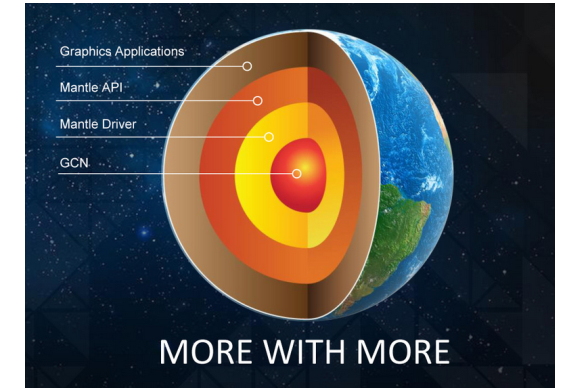Why AMD developed Mantle
From a game developer’s point of view, creating games for the PC has never been especially efficient. With so many combinations of hardware possible in a PC, it’s not practical to create specialized programming for every possible configuration. What they do instead is write simplified code that gets translated on-the-fly into something the computer can work with.
What Mantle does
Mantle is the harmony of three essential ingredients:- A driver within the AMD Catalyst™ software suite that lets applications speak directly to the Graphics Core Next architecture;
- A GPU or APU enabled with the Graphics Core Next architecture;
- An application or game written to take advantage of Mantle.
What it means for gamers
Now that Mantle has freed up some extra CPU capacity, we expect Mantle will lead to better games, and more of them, since Mantle makes game development easier.That’s not all Mantle will do for gamers. By shifting work to the GPU, a mid-range or older CPU isn’t the same handicap it was before. With Mantle, the GPU becomes the critical part of the system, and GPU upgrades will have a bigger impact than before.
- "AMD's Mantle will allow us to extract more performance from an AMD Radeon GPU than any other graphics API," Chris Roberts, CEO, Cloud Imperium Games.
- "Mantle lets you use AMD Radeon GPUs the way they are meant to be used, unlocking many new opportunities and increased CPU and GPU performance. Because of this, Mantle is one of the most important changes to PC graphics in many years." David Anfossi, studio head, Eidos-Montréal.
- "AMD's Mantle technology lets us get more out of the hardware than any other solution available. Adding Mantle support to our multi-platform, 64-bit Nitrous engine realizes significant gains in performance on Mantle-enabled hardware without adding enormous development overhead." said Dan Baker, co-founder, Oxide Games.

0 comments:
Post a Comment